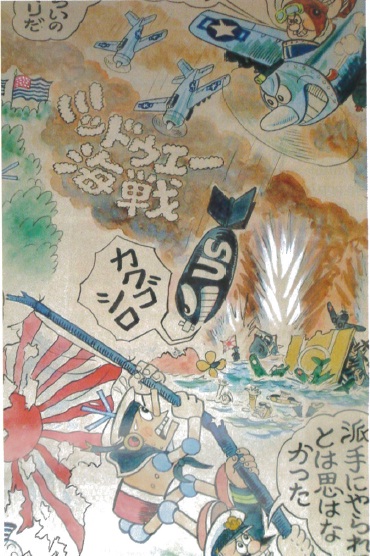Hillel Wright gets an animated history lesson in the Cartoon Temple
Cathedrals have beautiful stained glass windows, mosques have impressive geometric patterns rendered in mosaic tiles, but only Japanese temples have walls adorned with comics. At least one temple does.
The Cartoon Temple
Jourakuji Buddhist Temple in Kawasaki’s Nakahara ward is more popularly known as the ‘Manga-dera’ or the Cartoon Temple. The Jourakuji Temple shares a compound in a magnificent grove of giant heritage trees, deemed an Important Cultural Asset by Kawasaki City, with the Kasuga Jinja Shinto Shrine, an exercise in ecumenism quite common in Japan.
Getting there
The Cartoon Temple is around a 15-minute walk from Musashi Nakahara on the JR Nambu Line, or a two-minute walk from Yakushi-mae bus stop. You can catch the bus at Musashi Mizonokuchi station or Mizonokuchi station on the Tokyu Denentoshi Line.
What to do
Once you reach the temple area, you might want to spend some time wandering around the grove of huge, towering ancient trees that surround Kasuga Jinja Shrine and along the garden paths that front Jourakuji Temple. The heritage grove contains well over a dozen species of spectacular height and girth, as well as a number of flowering trees such as the colorful pink and red camellia (tsubaki).
The main event
Since manga is the major attraction here, you will soon want to enter the temple and see for yourself. Pro-war, anti-war, and post-war manga from the Showa, Taisho and Meiji eras are represented in over five rooms.
The Taisho hall provides a fascinating glimpse of Japan in transition between the ancient and modern worlds in a Brueghel-esque slice of life painted on a sliding door panel. It’s a rice riot! Boatmen ferry bales of rice onto a beach amidst a fury of mounted samurai, uniformed soldiers, and old ladies in kimono. Another scene, this one on a wall mural, depicts a group of samurai cruising what looks to be a Dutch red-light district.
In the room containing the oldest manga, the Meiji hall, we see a mural in classic early manga style of kimonoed men and women dancing happily on a beach. In the background, out to sea are ominous black ships. In a cruder, but perhaps no less political cartoon, a man with a pickax hacks a chunk of buttock off the statue of a nude woman, causing smoke to pour out of the newly created hole.
But certainly the most disturbing and challenging hall is the second Showa room, with its collection of manga from World War II. A typical propaganda mural of the 30s presents, in the nationalistic style echoed in the current Democratic People’s Republic of Korea, an army officer on a stage with a microphone, making a speech to his assembled troops. Behind him, in front of the hinomaru rising sun flag, an idealized young soldier plays an accordion as the real sun rises above a cloud.
Depicted on the opposite wall, in funny comic book style, is a more modern pastiche, owing as much to early Mad Magazine cover art as to Brueghel, the defeat of the Japanese Imperial forces by British and American troops and planes. A slogan in English — “Never forget Pearl Harbor” — ironically shores up the lower right-hand corner of the frame.
On the back wall, linking the adjacent images of fanatic patriotism and chaotic defeat, the hopeful and legendary emerges in the form of a grizzled, bare-chested, and bearded survivalist soldier in a jungle setting, no doubt some forgotten island in the South Pacific. He emerges onto the lush tropical landscape by means of a rope ladder out of a deep hole in the earth, and is caught by the artist in the act of catching a coconut tossed from a treetop by a monkey. Placed in surrealistic manga manner within the frame are a peacock, a frog, a snail, a mouse, a snake, and a human skull.
Making a visit
According to information compiled by columnist and author Mark Schreiber, the Manga-dera Temple displays about 5,000 individual works of art by over 400 artists, and Frederik L. Schodt in his seminal book Manga! Manga! The World of Japanese Comics tells us that the collection was assembled by abbot Shuuyuu Toki and his wife Yoko. The words “The Idea Priest; Cartoons and the Search for the Truth” are inscribed in Japanese above Abbot Toki’s central altar.
The current abbot is Toki’s successor Junwa Taniguchi. In order to visit the Manga-dera you must first make a reservation, either in person or by phone (044-766-5068 —Japanese language only). The temple is open to visitors with reservations at various times. Children under 15 years of age are not allowed inside the Temple.
For more information, visit www41.tok2.com/home/kanihei5/manga.html. In Japanese only.








